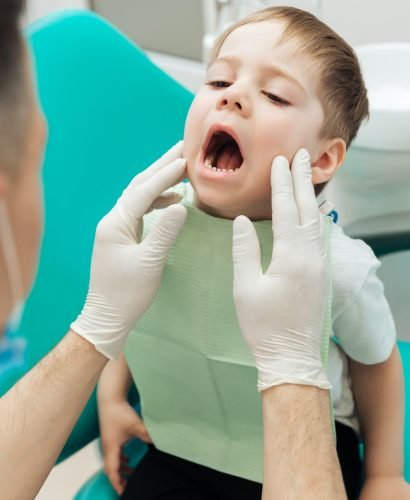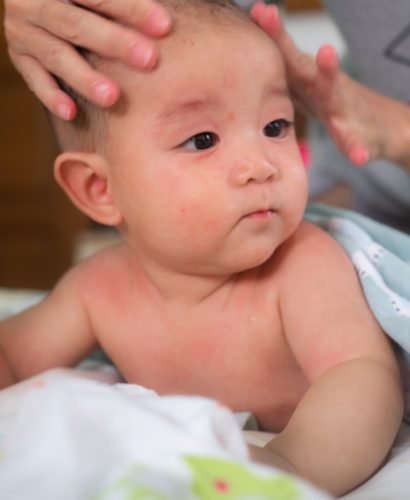Infection
What we offer
in infection category
When it comes to infections, don’t worry, you are not alone. That’s because young children are exposed to many new germs (viruses or bacteria) and haven’t yet built up enough defenses against them. The good news is that most of these infections are mild and won’t last very long if you seek out for medical health in time.


Infections
All kinds of Infections
Bronchiolitis
If your child is struggling to breathe, is difficult to wake or has a blue or pale tinge to their skin, lips or nails, call for medical advice immediately.
Urinary Tract Infection
The only way to diagnose a UTI is with a urine test. Treatment for UTI include antibiotics, giving your child lots of fluids.
Bronchiolitis
Bronchiolitis
What is bronchiolitis?
Bronchiolitis is an infection of the small airways of the lungs.
How do I know if my child has bronchiolitis?
When your child develops the following symptoms:
- Wheezing: a high pitched whistling sound produced when breathing out.
- Rapid breathing with a rate of over 40 breaths per minute.
- Laboured or difficult breathing.
What causes it?
Bronchiolitis is caused by the narrowing of the small airways in the lung. This narrowing may be caused by several viruses, usually the respiratory syncytial virus (RSV). While infants with RSV develop bronchiolitis, older children and adults may just develop cold symptoms. This virus spreads by contact with respiratory droplets from sneezing or coughing.
Bronchiolitis is a common lung infection in young children and infants. It causes inflammation and congestion in the small airways (bronchioles) of the lung. If it’s difficult to get your child to eat or drink and his or her breathing becomes more rapid or labored, call our clinic. This is especially important if your child is younger than 12 weeks old or has other risk factors for bronchiolitis — including premature birth or a heart or lung condition.




Urinary Tract Infection
Urinary Tract Infection
A UTI may be difficult to diagnose in children, who may have only nonspecific signs and symptoms. Signs and symptoms in infants with a UTI may also include; an unexplained fever, lack of appetite, and irritability. Contact us right away if your child develops any of the signs or symptoms of a UTI, such as, a strong, persistent urge to urinate, a burning sensation when urinating, abdominal or flank pain.
PEG
PEG
What is a PEG/G-tube?
It is a method of introducing food, fluids and medicines directly into the stomach by passing a thin tube through the skin into the stomach.
All children need proper nutrition for healthy growth and development. But some children have medical problems that prevent them from being able to take adequate nutrition by mouth. A gastrostomy tube (also called a G-tube) is a tube inserted through the abdomen that delivers nutrition directly to the stomach. It’s one of the ways doctors can make sure that the children with trouble eating get the fluid and calories they need to grow.
Fortunately, gastrostomy is a common procedure. After spending one or two days in the hospital, children who have had a gastrostomy can get back to their normal activities, including school and play, after the incision has healed.
Still, it helps to know some of the basics so you can feel confident about what is happening during the procedure and how you can support your child once the tube is in place. The more prepared, calm, and reassuring you are about the anesthesia and surgery, the easier the experience will probably be for both of you.
The PEG procedure stands for Percutaneous (through the skin) Endoscopic Gastrostomy. The doctor inserts an endoscope (a thin, flexible tube with a tiny camera and light at the tip) through the mouth and into the stomach to guide the G-tube into place. Putting in a G-tube takes only about 30 to 45 minutes. Kids are usually kept under observation for the next 1 or 2 days. Your child will be treated with pain killers during this period.




Urticaria
Urticaria
What is urticaria?
Urticaria (commonly called hives) are itchy rashes characterised by localised redness and swelling of the skin. These lesions may resemble mosquito bites and last for 24-48 hours before subsiding. They may be pin-point but can vary in size. Urticaria is common and up to 15% of people will develop an episode during their lifetime.
When these develop around loose tissues such as the eyes or lips, the affected area may swell excessively. This reaction is called “angioedema”.
Why does Urticaria happen?
In some cases, the cause such as a food allergy or drug allergy, is identifiable. For example, a patient with milk allergy often develops hives after taking milk accidentally. In such cases, the allergen causes cells known as mast cells to release a chemical called histamine. Histamine causes fluid to leak from blood vessels.
Urticarial may appear on any part of the body and are often very itchy. They are either white or red and can be either localised or widespread. Weals change shape and size and each one lasts from a few minutes to several hours.Urticaria in children is treated with non-sedating drugs, such as cetirizine. This is not curative, but often controls the itch and the spread of weals until the urticaria settles on its own.
Croup
Croup
Croup is a viral infection of the voice box and windpipe. It makes the lining of the voice box and windpipe swell, resulting in the breathing passages becoming narrower. Your child will probably have a hoarse voice and a barking cough. The cough may be worse at night. Your child may also have a fever or noisy breathing.
Expected Course:
Without treatment, croup usually gets worse in the first three days before it stabilises. It usually lasts for five to seven days and is generally worse at night.
How can you help your child feel better?
Your child may be upset and frightened because he/she cannot breathe very well. The sound of the cough can be frightening too. Here are some things you can do to help your child feel better:
- Stay calm. This will help your child stay calm too, which will help his/her breathing.
- Sit your child upright on your knee. Or, you can put some pillows behind your child’s head and back when he/she is in bed. This may make it easier for your child to breathe.
- If your child has a fever, give him/her lots of warm fluids to drink.
- You can give your child paracetamol if he/she has a fever.
There’s no vaccine for the common cold. The best defense against the common cold is common sense precautions and frequent hand-washing. A cold virus enters your baby’s body through his or her mouth, eyes or nose. Once infected by a virus, your baby generally becomes immune to that virus. But because so many viruses cause colds, your baby may have several colds a year and many throughout his or her lifetime.



